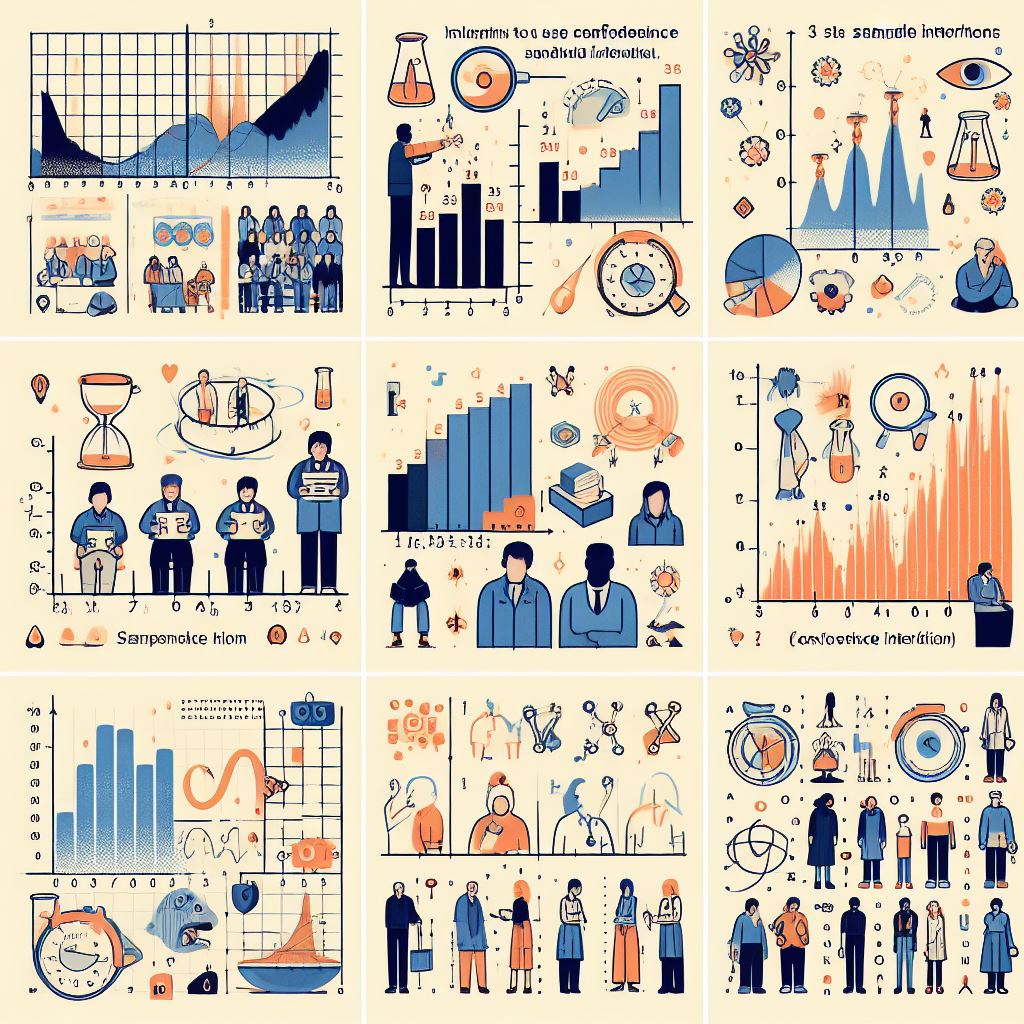Category: Data Science
-
How to Use Confidence Intervals for Standard Deviations
In statistics, the standard deviation (SD) is a vital measure of the spread or dispersion within a data set. However, directly accessing the entire population to calculate the true population standard deviation (σ) is often impractical or impossible. This is where confidence intervals (CIs) for standard deviations come in, offering a powerful tool for estimating…
-
How to Calculate Confidence Intervals for the Difference in Proportions
In the realm of statistics, we often encounter situations where we want to compare the proportions of individuals possessing a particular characteristic in two different populations. However, directly measuring the entire population is often impractical. This is where confidence intervals for the difference in proportions (CI for difference) come into play, offering a powerful tool…
-
Confidence Intervals: A Guide to Proportion Estimation
In the realm of statistics, we often encounter questions that involve estimating a population proportion – the true percentage of individuals in a population possessing a specific characteristic. However, directly accessing the entire population is often impractical or impossible. This is where confidence intervals (CIs) come into play, offering a powerful tool for estimating the…
-
Confidence Intervals for the Difference Between Means
In the realm of data analysis, comparing two populations or groups often lies at the heart of our inquiries. Whether it’s examining the effectiveness of different teaching methods, assessing the growth rates of two companies, or comparing the average age of residents in two neighbourhoods, understanding the difference between the populations becomes crucial. However, relying…
-
A Comprehensive Guide to Confidence Intervals for the Mean
In the realm of statistics, where data reigns supreme, drawing conclusions and making inferences often involves peering through a veil of uncertainty. While sample statistics like the mean give us a glimpse into the population parameters, they are inherently estimates and not the absolute truth. This is where confidence intervals (CI) come in, playing a…
-
Fundamentals of the Central Limit Theorem
In the realm of probability and statistics, the Central Limit Theorem (CLT) stands as a cornerstone, offering a powerful tool for understanding the behavior of sample means. This fundamental theorem reveals a fascinating phenomenon: regardless of the original distribution of a population, if you draw sufficiently large samples from that population, the distribution of the…
-
The Multinomial Distribution: Exploring Multiple Outcomes in Experiments
In the realm of probability and statistics, understanding the likelihood of various outcomes in an experiment is crucial. The multinomial distribution emerges as a powerful tool for analyzing scenarios where multiple possible outcomes can occur in a single trial, and we’re interested in the probability of obtaining specific combinations of these outcomes over a series…
-
The Negative Binomial Distribution: Counting Trials Until “r” Successes
In the realm of probability, understanding how many trials are needed until a specific number of successes occur is crucial. The negative binomial distribution emerges as a powerful tool in this context, focusing on calculating the probability of encountering r successes in a series of independent and identically distributed (i.i.d.) trials with two possible outcomes:…
-
The Hypergeometric Distribution: Sampling Without Replacement
Imagine drawing a certain number of objects from a finite population where some objects are of interest and the order of drawing doesn’t matter. This scenario, where sampling occurs without replacement, is precisely where the hypergeometric distribution steps in. What is the Hypergeometric Distribution? The hypergeometric distribution is a discrete probability distribution used to calculate…
-
The Exponential Distribution: Modeling the Time Until the “Next Event”
The realm of probability often involves studying the time it takes for events to occur. In such scenarios, the exponential distribution emerges as a powerful tool. It describes the probability distribution of the time between independent events in a continuous process. Understanding the Exponential Distribution The exponential distribution applies to situations where: Key Features: What…









